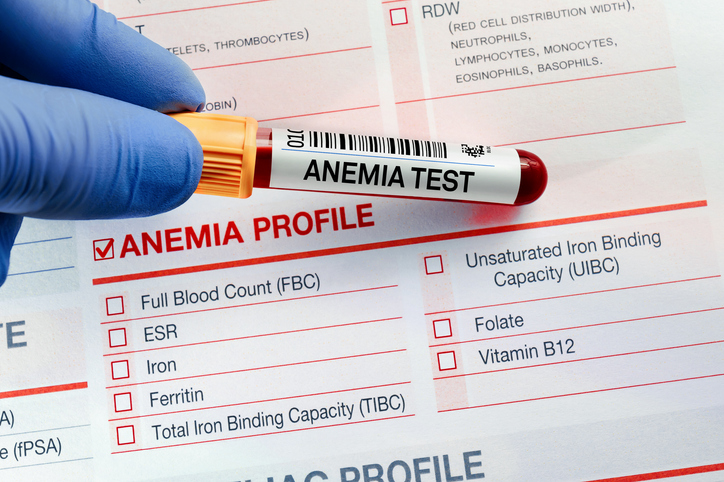Untreated Anemia Can Be Deadly

By Joy Stephenson-Laws, JD, Founder
On the outside Stephanie Aston looked like a typical, healthy 33-year-old woman, but she had what some might call an “invisible illness.”
The truth is that many Americans live with invisible illnesses.“Invisible illness encompasses a laundry list of conditions ranging from the common to the obscure. It's easy to imagine that people with heart failure, cancer, diabetes, depression, or dementia might fly under the radar despite dealing with frequent exhaustion, chronic pain, nerve damage, or trouble thinking or remembering,” according to Harvard Health Publishing.
“But perhaps more opaque are ailments with wax-and-wane symptoms, such as lupus, digestive disorders, multiple sclerosis, chronic fatigue syndrome, fibromyalgia, or rheumatoid arthritis, all of which affect more women than men.”
Aston’s disease was more on the obscure side. She had a genetic condition that I honestly had never even heard of, called Ehlers-Danlos Syndrome (EDS).

There are several types (at least 13 kinds) of EDS, and it is a complex disease. To put it simply, EDS affects connective tissues responsible for supporting skin, bones, blood vessels and several other organs and tissues (National Institutes of Health (NIH)). EDS occurs due to the body not being able to make sufficient amounts of collagen or there being an issue in the structure of the collagen that the body makes.
Some people with EDS may experience hypermobility, which is an increased range of motion. This may not sound too bad, but this can result in loose joints especially prone to dislocation and chronic pain.
“Infants and children with hypermobility often have weak muscle tone (hypotonia), which can delay the development of motor skills such as sitting, standing, and walking,” according to the NIH.
Babies born with specific types of EDS are born with hypermobility and are even born with both hips dislocated.
Other symptoms of EDS may include skin issues that make the person very prone to bruising, scarring, open wound issues and more. EDS is rare, with one in every 5,000 people having it.
Then there is vascular EDS.“Bleeding problems are common in the vascular type of Ehlers-Danlos syndrome and are caused by unpredictable tearing (rupture) of blood vessels and organs. These complications can lead to easy bruising, internal bleeding, a hole in the wall of the intestine (intestinal perforation), or stroke,” (NIH).
As you can probably imagine, this has the potential to be very dangerous and life-threatening. For example, death may happen due to an internal hemorrhage. This is the type of EDS that Stephanie Aston suffered from.
“Vascular Ehlers-Danlos syndrome can weaken your heart's largest artery (aorta), as well as the arteries to other regions of your body. A rupture of any of these larger blood vessels can be fatal. The vascular type can also weaken the walls of the uterus or large intestines — which also may rupture,” reports the Mayo Clinic.
Tragically, Aston passed from EDS earlier this month, and the story of her medical diagnosis and treatment is quite disturbing.
According to one report from The Independent, Aston first started experiencing symptoms in 2015 (when she was 25-years-old). Her symptoms included intense migraines, abdominal pain, joint dislocations, being very prone to bruising, iron deficiency, fainting, tachycardia (a heart rate of more than 100 beats per minute) and multiple injuries. At this time, she did not know that she had EDS. At this time she sought medical attention and was told to go to Auckland Hospital in New Zealand. This is where a doctor allegedly accused her of causing her own illness.
“Because of his accusations, Aston was placed on psychiatric watch. She had to undergo rectal examinations and was accused of practising self-harming behaviours. She was suspected of faking fainting spells, fevers, and coughing fits, and there were also suggestions that her mother was physically harming her,” The Independent reports.
A report from People Magazine claims her doctor diagnosed her with Factitious Disorder (also called Munchausen’s). This is essentially a mental disorder in which a person falsely claims that they are sick or purposely harms themself to appear sick for sympathy and attention.
It seems like she was given this false diagnosis relatively quickly even though members of her family are also living with EDS. As mentioned, this is a genetic condition.
“In a complaint to the Auckland District Health Board, Aston laid out how the misdiagnosis from the doctor — called Doctor A in reports — negatively impacted treatment for her anemia,” according to the report from People.
"Due to my extremely low hemoglobin levels, my specialist feels I am at serious risk of dying," Aston said when she was alive, People reports.
"I was told because I had been a midwife I must be stealing needles from the hospital and bleeding myself through my vagina, my bowel or my throat," she said.
There are several reports about what transpired, but what really caught my attention was the following.
“I knew she struggled with severe anaemia for many years and often struggled to receive the blood transfusions she desperately needed. The doctor in question had accused her of intentionally draining her blood to alter her blood counts,” said Norma Hockenhull, a woman also with EDS who met Aston in 2017, according to this report.
Anemia is a condition in which the body does not have enough red blood cells. It can also occur if these red blood cells are not working properly.
Untreated anemia can cause death.
“Anemia results in a decreased oxygen-carrying capacity of the blood. In the short term, the body can compensate with an increase in heart rate and respiratory rate. If left untreated, anemia can cause multi-organ failure,” (National Institutes of Health (NIH)).
It appears that Aston died due to untreated anemia, and what is so unbelievable is that it appears that she lived without proper treatment for her anemia for more than five years.
Sadly, I have blogged before about people whose medical conditions were not taken seriously.
This young, African-American woman was denied a colonoscopy for months and discovered she had colon cancer when she finally was granted one. I highly recommend reading this pH blog about medical gaslighting.
How can we be proactive?
Aston was a huge advocate for the EDS community, and she bravely shared her battle with the public. It’s awful she did not get the treatment she needed and deserved.
Each of us has to be the biggest advocate for our own healthcare. When we run out of answers for unusual symptoms and illnesses, never forget genetic testing. There is no cure for EDS, but with the proper care it can be managed.
It is important for people with EDS to eat a healthy, nutrient rich diet and eat foods that are good for preventing and managing anemia. As always, speak with a competent healthcare professional. And remember that if you are not satisfied with the advice or recommendations of your doctor or feel that you are not being taken seriously, always get another opinion.
Our thoughts go out to Sephanie Aston's family and friends.
Enjoy your healthy life!
Disclaimer: This article is not intended to provide medical advice. Please consult with your doctor or another competent healthcare practitioner to get specific medical advice for your situation.
The pH professional health care team includes recognized experts from a variety of health care and related disciplines, including physicians, attorneys, nutritionists, nurses, and certified fitness instructors. This team also includes the members of the pH Medical Advisory Board, which constantly monitors all pH programs, products, and services. To learn more about the pH Medical Advisory Board, click here.







